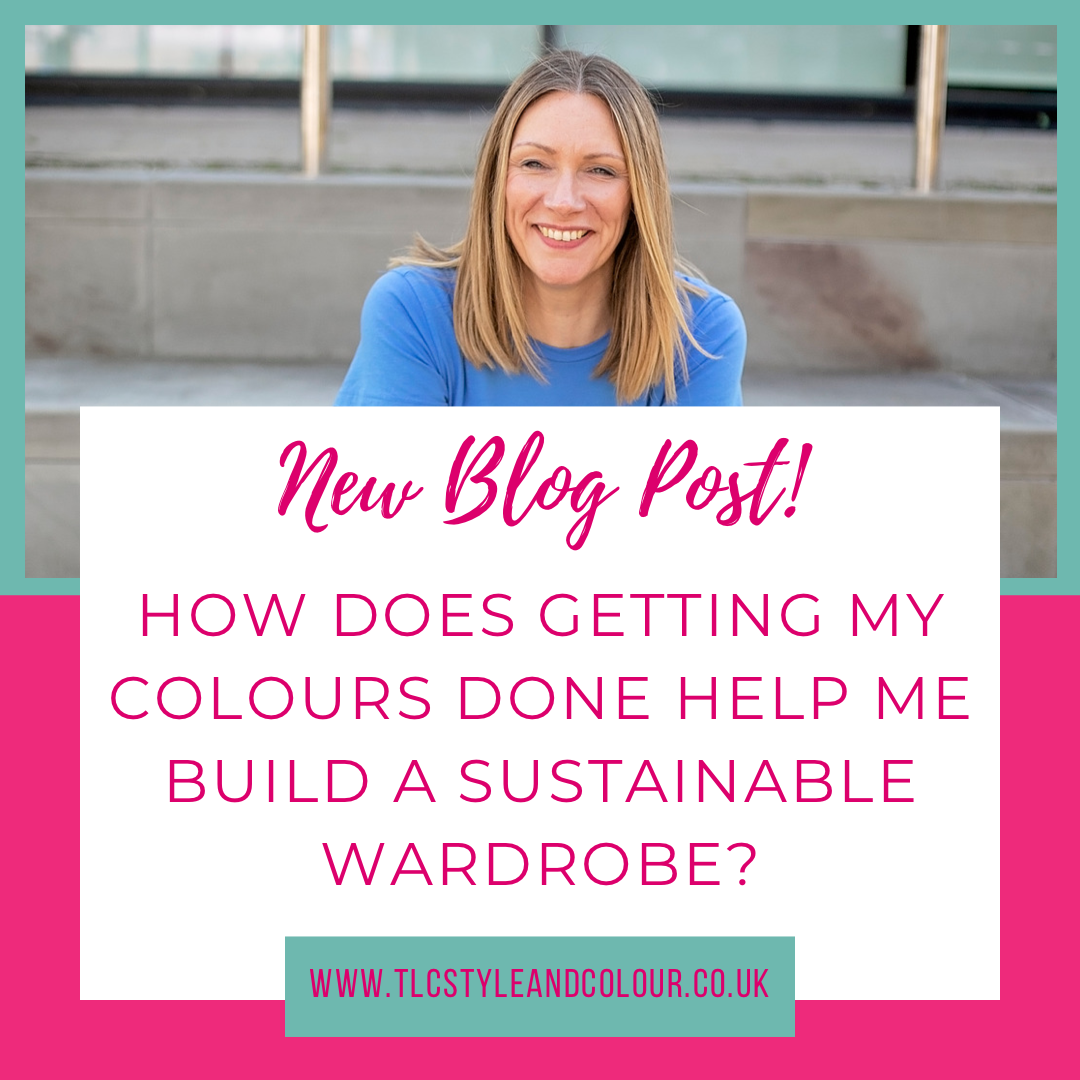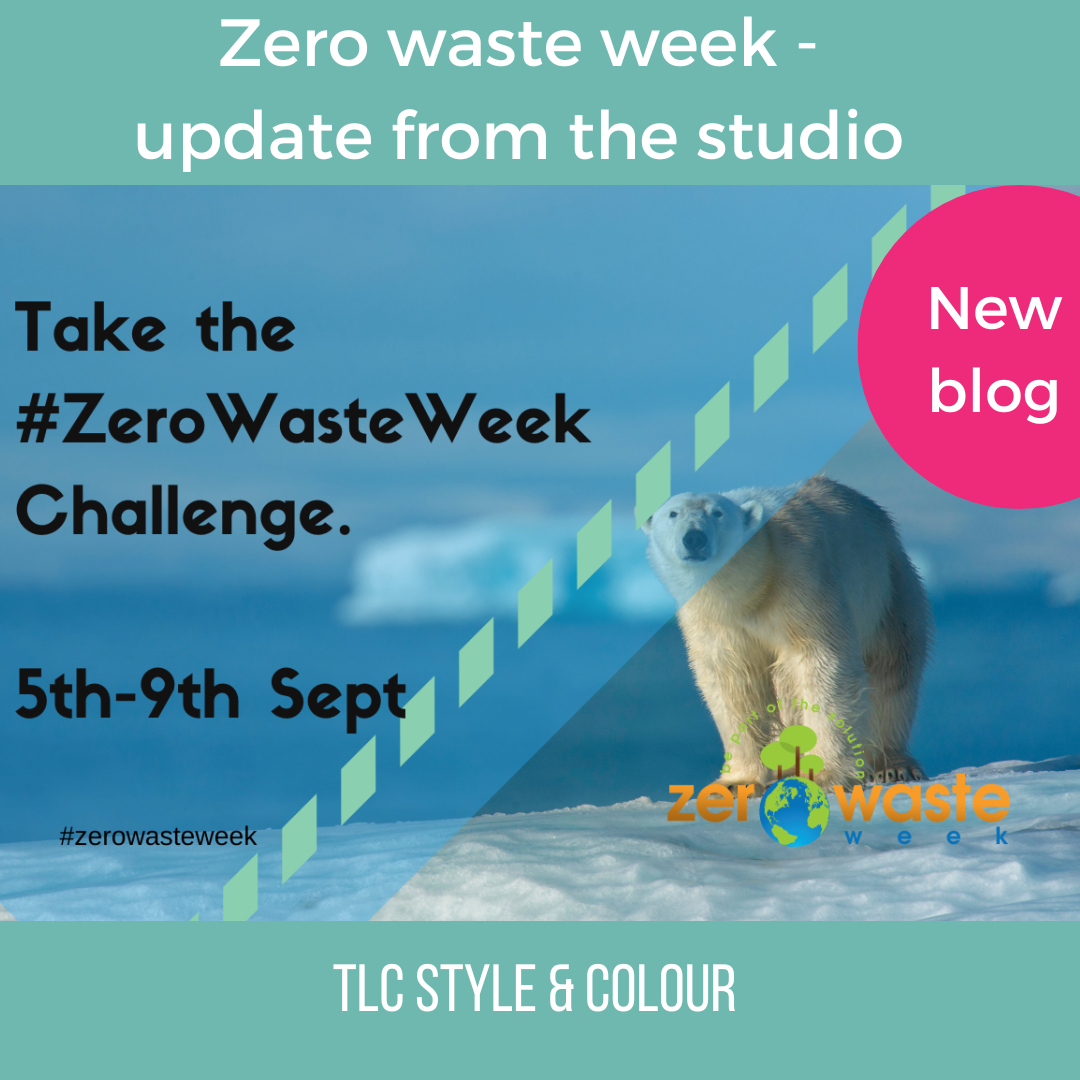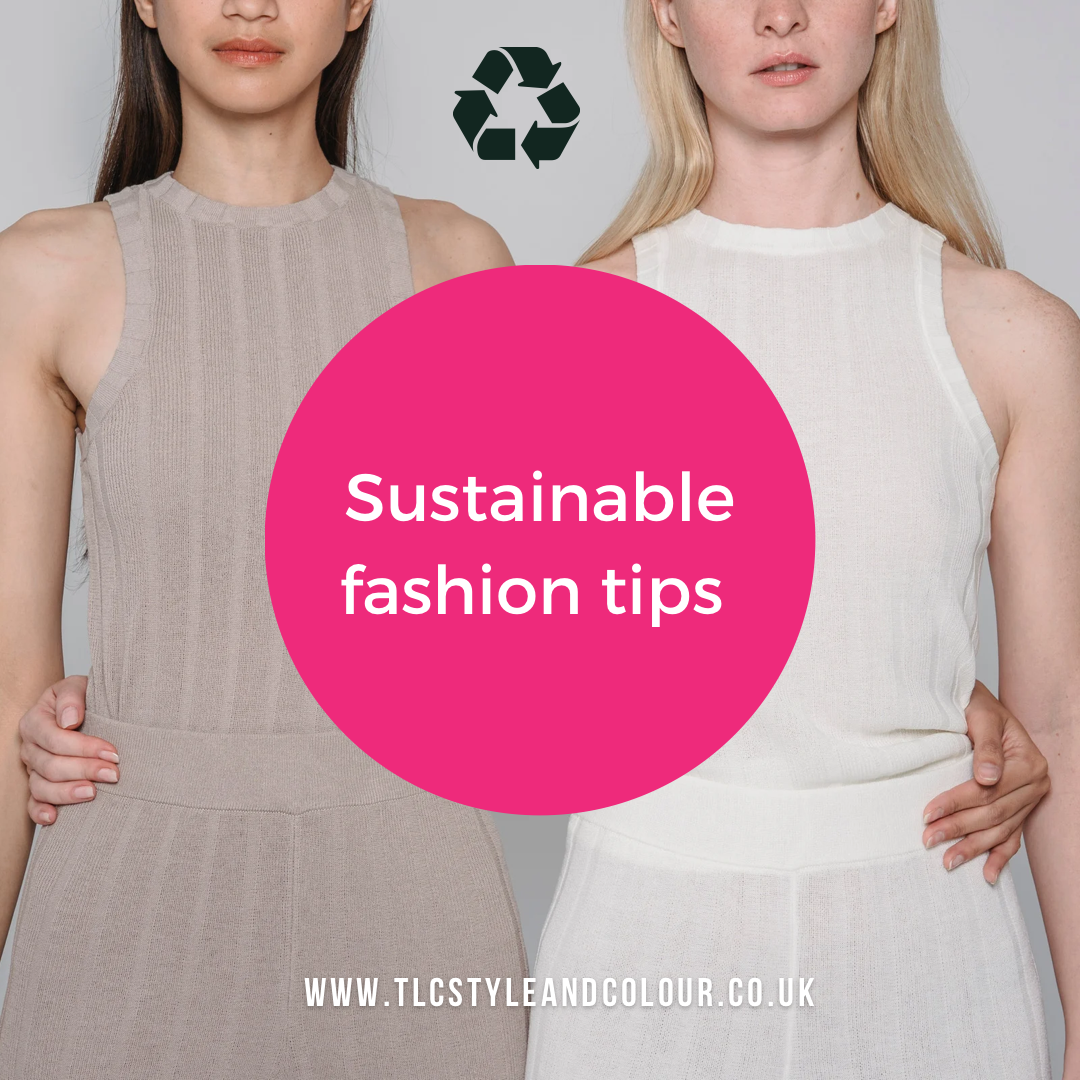I’ve talked about the benefits of getting your colours done before. Clients tell me all the time how easy it is for them to shop when they know their colours and, how they save money because they no longer buy things that don’t suit them.
When I first had my colours done many years ago now, I found the same. Even now, I can still walk into a store, look at the racks and I don’t even walk over unless I spy colours that I know will suit me. Some of my clients have a picture on their phone for any impulse trips when they haven’t got their fabric swatches with them so they don’t make mistakes.
Consider Pre-Loved
Of course, this alone won’t build a sustainable wardrobe. It’s about the choices that you make. If you’re making fewer mistakes and buying less items as a result of knowing your colours, this will help you build a more sustainable wardrobe. New clothes don’t need to be brand new either. Pre-loved is huge now. Charity shops, Vinted and EBay have hoards of clothing and you’ll find lots being sold with the tags still on! Just search BNWT (brand new with tags) or BNWOT (brand new without tags). There’s also swap shops and clothing exchanges in most cities now if you prefer physical browsing and you can still take your swatches with you too!
Repair, rewear, recycle
Patrick Grant on The Great British Sewing Bee was instilling the virtues of repair, rewear and recycle recently. All things we frequently hear are essential elements to building a more sustainable wardrobe. Whilst I do have clients who do these things, not everyone can or will. On Instagram (8 June), they shared three statistics:
- The average person buys 60% more clothes than they did 15 years ago (and wears them for half as long)
- The equivalent of one bin lorry full of clothing is dumped in landfill or burned every single SECOND
- The fashion industry produces and sells a staggering 100 billion garments every YEAR
I took to google to ask “how many people live in the world”? The answer was 7.888 billion (2021), which is 12-13 garments for every person. Essentially that’s one clothing item every month.
Building a more sustainable wardrobe is something which many people aspire to, but over-consuming ‘fast fashion’ is the challenge given the over-production. It can simply be too tempting! There’s a reason there’s so many ‘bargains’ in the sale rail! Remember it’s only ever a bargain if you actually wear it. Consider not just the cost of the item, but the cost per wear.
Introducing Sam
Sam booked my Complete Colour Analysis consultation because she wanted to be more sustainable with her future clothing choices. She wanted to make fewer mistakes and know that what she bought suited her.
Her wardrobe wasn’t particularly colourful because she didn’t feel she knew what colours worked for her. She wasn’t afraid of experimenting, but felt she needed more guidance and understanding so she didn’t keep making the same mistakes. Sam wanted a more coordinated wardrobe so she could make more outfits from fewer things.
After her session, she told me that she felt much more confident about future shopping purchases knowing that what she did buy would suit her and that she had her swatches to help guide her.
Colour analysis concerns
One concern with having a colour (or a style consultation) is that you’ll need to get rid of all your clothes and start again! This isn’t something which I recommend (nor is it sustainable and something I’ve covered previously). I guarantee you’ll have things hung up which don’t suit you, but then you probably knew that already.
During a colour consultation I talk you through how to wear your colours. It’s not just what colours to wear as there’s so many different shades and fabric choices. Understanding how to wear things you may already have which aren’t your best colours is important too. This could be dying them, keeping them away from your face or ensuring you wear something more complimentary close to your face such as a scarf or another top underneath. Knowing the ‘rules’ and how to apply them is all part of the journey!
Too many clothes
Most people admit they have far too many clothes in their wardrobe. They also tell me they only ever wear a fraction of the clothes in their wardrobe. When I ask what the reason is for not wearing these clothes, they often tell me that they don’t fit. Or that they don’t know how to wear them. Or they used to wear them, but now not so much. Which begs the question – why keep them?
Whatever the reasons for keeping hold of things we don’t wear, the feeling of overwhelm every day is hard to overcome. It’s often why people ask me about creating a capsule wardrobe. I get the attraction – imagine having a smaller collection of clothes, which can be worn in multiple ways to create more outfits. Yet, the fear of not having ‘enough’ clothes often stops them. But how do you measure too much? Everyone is different which is why I don’t believe in setting a number on how many clothes you must have. It’s pointless in my view! What you need depends upon how you spend your time, what your style preferences are and of course your budget. Know what suits you and you’re half way there to building that sustainable wardrobe. All you have to do is take the steps to create it.
Learn your colours by booking a colour analysis consultation.
If you’re ready to create your own capsule wardrobe but need some guidance, check out my Capsule Wardrobe Masterclass here.




